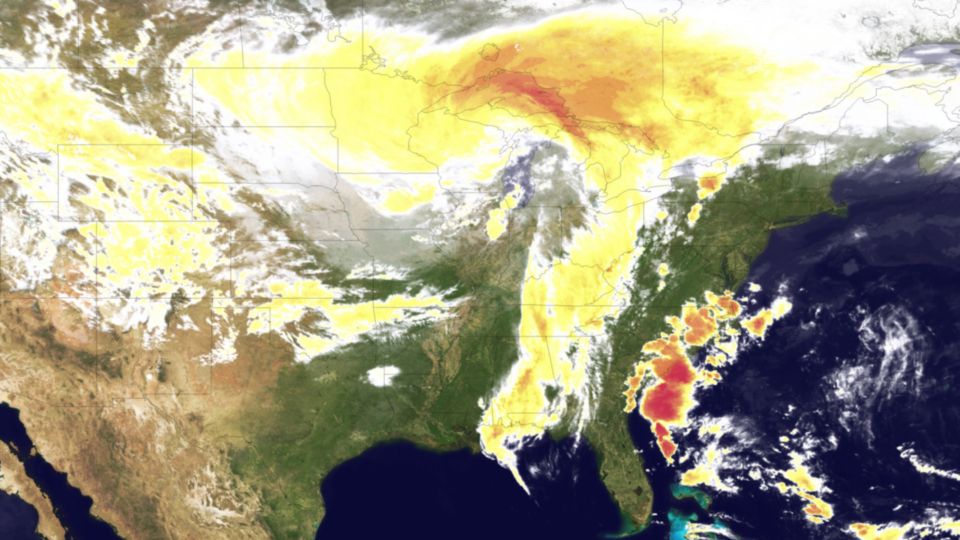
Recent Deadly Storms Fueled By Lingering La Niña

For the second day in a row, deadly storms hammered Arkansas and the rest of the South. A lingering La Niña pattern may be behind the steady march of storms across the region in recent days.
Monday's storms killed 10 people in Arkansas and another round of storms on Tuesday killed another person. The bad weather spilled into the rest of Dixie Alley and four people were killed in Mississippi over the past two days. The latest round of intense storms are unloading today (April 27) on Arkansas as the storm system slowly marches eastward, during what is a potentially record-breaking month for tornadoes. [Infographic: Tornado! An Inside Look at Tornado Season]
"Fortunately, it does look like the last round for a couple of days," said Chris Buonanno, a meteorologist with the National Weather Service in Little Rock, Ark.
Across the country, this spring's severe weather seems to be rapidly reloading between storms. That could be due to a La Niña pattern that has persisted over the last few months, said Grady Dixon, a climatologist and meteorologist at Mississippi State University in Starkville. This opposite phase of El Niño features abnormally cool equatorial waters in the central Pacific Ocean.
Along with creating dry weather in the Southwest and contributing to the historic wildfires in Texas, La Niña tends to guide the jet stream north through the Pacific Northwest and Great Lakes, trapping cold air on the northern side and the warm, humid air needed for thunderstorms on the southern side.
That means that the South stays wet because cold fronts that would normally dry out the atmosphere are blocked, Dixon said. So the hits keep coming, one after the other as the storm slowly moves east.
In Arkansas, a cold frontal boundary should sweep through today (April 27), drying out the atmosphere and stopping the storms for a time, Buonanno told OurAmazingPlanet.
Sign up for the Live Science daily newsletter now
Get the world’s most fascinating discoveries delivered straight to your inbox.
Not all La Niña events are associated with highly active severe weather seasons, Dixon said, but some years with similar La Niña characteristics are also historic tornado years, including 1974, 1999 ? which saw an EF-5 tornado devastate Moore, Okla. ? and 2008. (The EF5 tornado is in the strongest category of the Enhanced Fujita Scale, with winds of over 200 mph.) [The Tornado Damage Scale in Images]
When all the damage is analyzed, April 2011 could set a record for the number of tornadoes in the month. April has also had a spike in killer tornadoes. The tornado season is only two months old, but the death toll from this year's tornadoes — 45 as of April 25 — has already matched the death toll from all of last year, but is well below that of other historic tornado years.
- Weirdo Weather: 7 Rare Weather Events
- In Images: The Tornado Damage Scale
- In Images: Storm Spotters in Action
Email OurAmazingPlanet staff writer Brett Israel at bisrael@techmedianetwork.com. Follow him on Twitter @btisrael.












